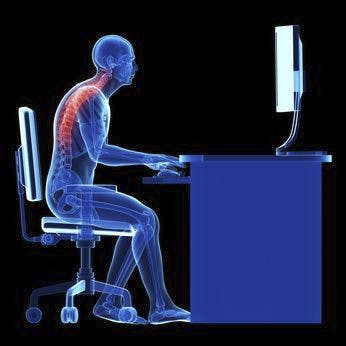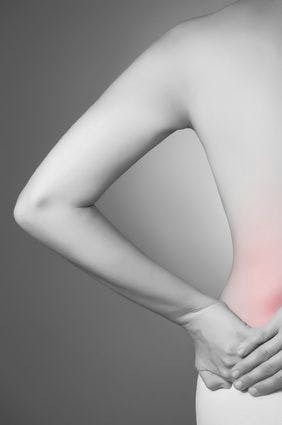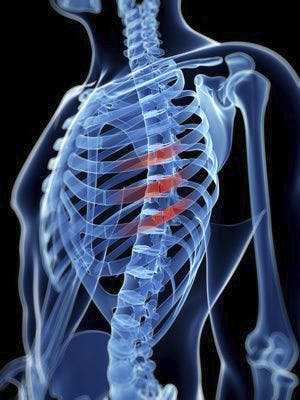BACK PAIN TREATMENT IN HILLSBORO & BEAVERTON
Back pain is one the most common pains that bring patients to visit the doctor, miss work, and skip sports. This type of pain is also one of the leading causes of disability worldwide. Because of how much we use our backs for almost every activity we do (walking, standing, sitting upright, lifting, carrying) it is no wonder that pain and discomfort in our spines would cause us to halt most of our activities.
Fortunately, back injury physical therapy is one of the leading interventions one can do to combat back pain and prevent it from happening again. Simple home treatments, core strengthening exercises, walking, and using proper body mechanics and posture can all contribute greatly to healing your back. Contrary to traditional views of spinal pain, surgery is rarely needed to cure it, physical therapy, done right, can do wonders. Our Hillsboro and Beaverton physical therapy clinics have the expertise and facilities to handle all your treatment needs.
Another reason why a patient suffering from back pain should seek help from a physical therapist is because we are movement specialists. Back pain does not exist simply in a body part, or a focal area - it oftentimes affect how we move in our whole kinetic system. Back pain can cause a multitude of other compensations and faulty movements patterns such as a hunched back, legs turned out cowboy-style, or decreased movement and flexibility in the hips. In fact research shows this is true:
"Low back pain lead to altered movement patterns of the main joints of lower limbs especially on the dominant side during stance phase." Reference: https://www.ncbi.nlm.nih.gov/pubmed/32120055
A physical therapist can not only treat the focal area of discomfort and pain, but also assess the movement patterns created by the disorder and correct for that via exercise and guidance.
Pain in the back is caused by a variety of problems, and because the back is a complex network structure of spinal muscles, nerves, bones, and disks, proper diagnosis and treatment is necessary to hone in on the cause and location of the pain. Following are some of the most common locations and conditions that we see at Stride Strong PT that can cause back pain and ways that we can treat it effectively in the clinic.
The following are common back conditions we see at our Portland physical therapy clinics:
Lower Back Pain Therapy
Lower back pain is an umbrella term in and of itself, and only speaks to its location. The cause of low spinal pain can be from multiple sources such as the ones below:

- Nerve roots, and also small lumbar nerves that emerge from the spinal column that innervates the legs can get irritated
(see "sciatica" below) - Paravertebral muscles that flank the spine can be irritated and spasm/tighten
- Spinal joints may be damaged, irritated, or malaligned
- An intervertebral disc may be degenerative
A thorough examination with a physical therapist will allow a more detailed cause of your lower back pain. Once found, your physical therapist will discuss with you a home exercise program and activity modification low back injury therapy plan so you can better treat your pain with care. Because of the back's tendency to spasm and guard quickly at the onset of dysfunction, lower back physical therapy may take a while to coax the muscles to relax and strengthen. Additionally, because most of us live very sedentary lives, the propensity for muscles of the back and core to strengthen is less. This explains why due diligence to your prescribed home program will allow you to get better faster.
Your physical therapist may also use a number of manual maneuvers to coax joints to release and align well. Soft tissue mobilization is also very effective in relaxing tight and tense muscles that contribute to the pain. Remember, though – the strongest arsenal in the fight against low back pain is core strengthening, good body mechanics, and good posture.
Upper Back Pain Treatment

Upper back pain is typically brought about by poor posture. Typically, the thoracic spine is a very stable area of the body that does not see very much injury or strain – save for those that have culminated from years – sometimes decades – of poor posture.
The largest culprit in upper spinal pain is the work desk. More 8+ hours a day we pore over our laptops and desktops and hunch over the keyboard. This is very little movement in our bodies save for our fingers typing away. The result is a stiff upper back that does not get much rotational stretch or movement, and a hunched over appearance called a "kyphosis". This slow deformation of the spine gradually over-stretches muscles of the upper back so much that they would have to work so much harder to function and contract. Sometimes this over-stretch and over-strain of muscles cause them to feel tight and sore.
Upper back physical therapy can help re-introduce proper form, posture, and movement by way of joint mobilizations, exercises, and stretches. You will find that not only will your upper back feel better, but the rest of your body may also benefit because of improved shoulder and scapular mechanics – and thereby reduce the risk of future shoulder pain and neck pain.
Disc Pain Treatment

Disc pain caused by a pinched nerve, herniated disc, bulging disc, or a slipped disc is traditionally treated by lumbar micro discectomies and lumbar fusions. Though these surgical interventions are still very much done today, increasing evidence shows that patients sometimes are no better than they were prior to surgery. Moreover, some patients find the horrible effects of surgery only too late – such as the 'ladder effect' of lumbar fusions, where more and more fusions need to be done further up the spine because of weakened structures from the previous surgery.
Pain can actually be remedied by disc physical therapy alone. The process may be long, about 6 to 12 weeks, but it is worthwhile not having something irreversible and invasive done to your body. Physical Therapists perform manual mobilizations and soft tissue mobilizations to ease the pain, maneuver limbs to improve nerve gliding and prescribe progressive core exercises to strengthen (rather than weaken) the spinal structure. Over time, we have been very successful in rehabilitating majority of our patients back to their daily functions and even back to sports.
Regardless of whether your disc pain was treated by a surgeon or not, physical therapy is a vital component in back pain recovery. Not one single profession can deliver all in one: manual therapy, exercise therapy, and posture re-education.
Sciatica Treatment

Sciatica is a syndrome – a resultant irritation of the sciatic nerve from an impingement further up the chain on the nerve. Its causes are multitude, and effective treatment of sciatica always encompasses targeted treatment on the dysfunction.
Oftentimes, sciatica hints at a structural weakness in the spine. Usually, this comes in the form of a disc herniation, lumbar spine stenosis or sacroiliac dysfunction. Sciatica physical therapy treatment can then vary quite dramatically depending on what is causing the sciatic pain. A PT's goal is to find the area of dysfunction and serve to loosen or "unclog" the area so the sciatic nerve, and nerve bundles above and below it is allowed to move freely. This is done through joint mobilizations, nerve gliding, and This "freeing of the nerve" is what will relieve the patient's sciatic pain. This being so, however, does not mean the end of treatment, though – dysfunction is always caused by a faulty motion, and this needs to be addressed by way of exercise, posture and body mechanics re-education.
SI Joint Pain Therapy

SI joint pain that radiates in the back of the hip and into the buttock. This is commonly mistaken for sciatica because it has very similar presentations, although the pain has less of a radiating quality to it.
The SI joint is flanked by the sacrum and the ilium ( the pelvis). It carries the weight of the upper half of the body and is the connecting part of where the spine meets the lower extremity. The SI Joint is meant to be stable and strong and have very little movement in it.
However, things can go wrong when because of trauma, injury, chronically bad sitting habits or ligamentous laxity from pregnancy, the SI Joint becomes loose and unstable. Oftentimes, patients might feel like they need to go to a chiropractor to get readjusted – however this perpetual adjusting of the SI Joint may cause it to become chronically unstable.
Though we do employ similar manual techniques in physical therapy, our goal is to strengthen the lumbopelvic girdle so the muscular stability can take the place of ligamentous stability, and allow for loose and irritated ligaments to heal. This process need not take long or extensive amounts of PT – just due diligence to home exercises, core strengthening, and altering amounts of time spent in poor postural positions like slouching or sitting.
Rib Fracture Therapy

Rib fractures are common with contact sports and sometimes in car accidents. Rib injuries are rarely surgical cases, but still need to be checked and monitors by a physician to ensure union of the bone. Physical Therapy for rib fractures need not be extensive because the ribs will have to heal on their own – though much can be gained through patient education about posture and activity modifications to relieve discomfort and gentle exercises to maintain range of motion. PT can also be very helpful at the end stages of healing the broken rib injury, so the patient can return to their sports activities without muscle impairment.

Stride Strong Physical Therapy sees a multitude of patients suffering from back injuries.
What sets us apart from other practitioners, including chiropractors and massage therapists, is that we stand firm on the notion that physical therapy that consists of exercise and strengthening heals the back. Although manual therapy, massage, joint work can all help with relieving pain (most of which we can also do) – the key intervention to stop the perpetual cycle of back pain is core strengthening. We have seen too many patients suffer through years of pain, only to plunge their out of pocket dollars into passive modalities and not gain any traction in their ability to walk, lift, or stand up straight – when what they need most is 8 weeks of intensive back injury therapy and progressive core strengthening to allow them to gain back their abilities.
Find the right people to help you, find us at Stride Strong PT, we have two convenient clinics in Beaverton and Hillsboro.
Same-day/Next-Day Appointments are Available.
Check out our location nearest you and give us a call at to Get Started!
